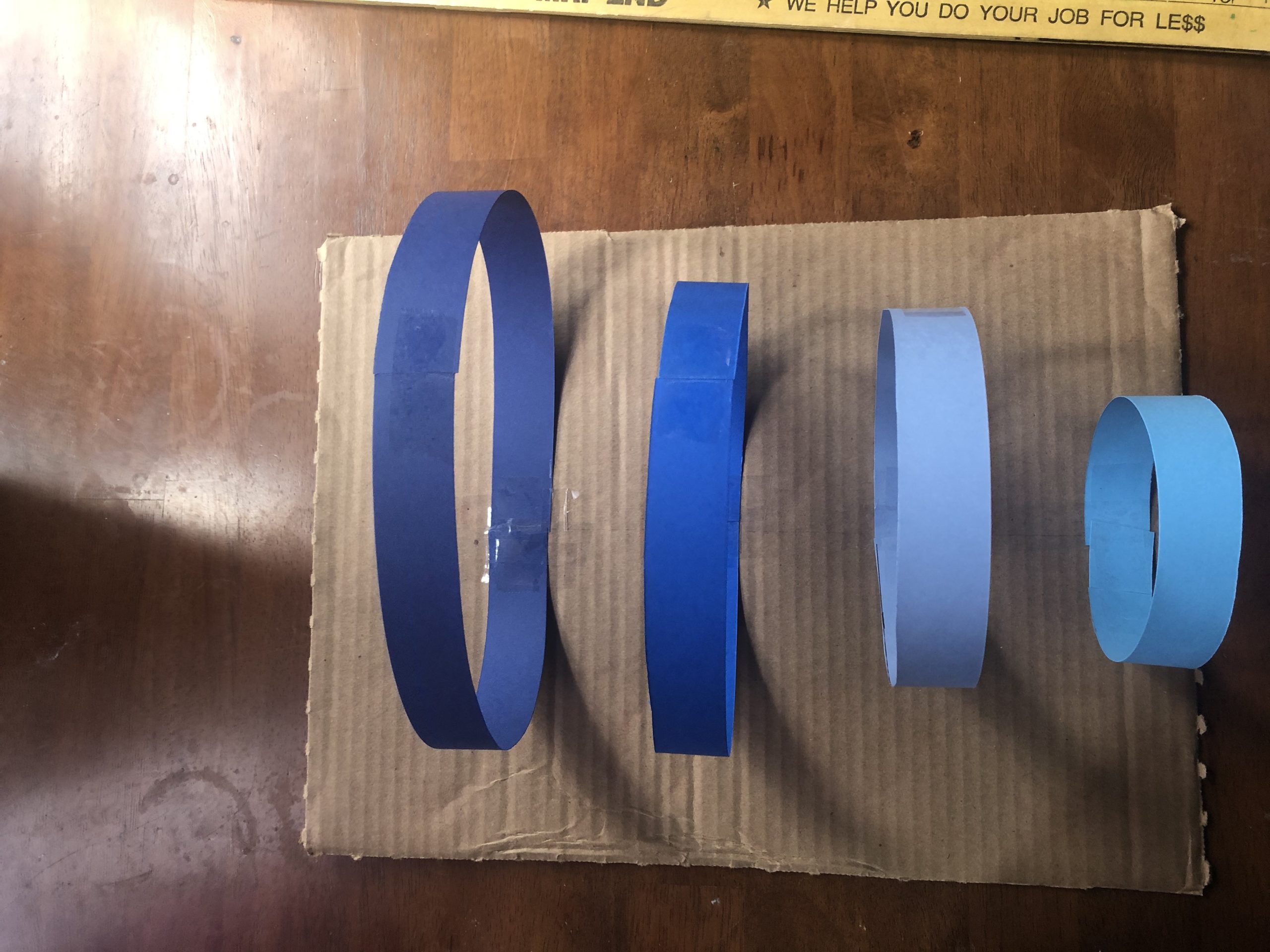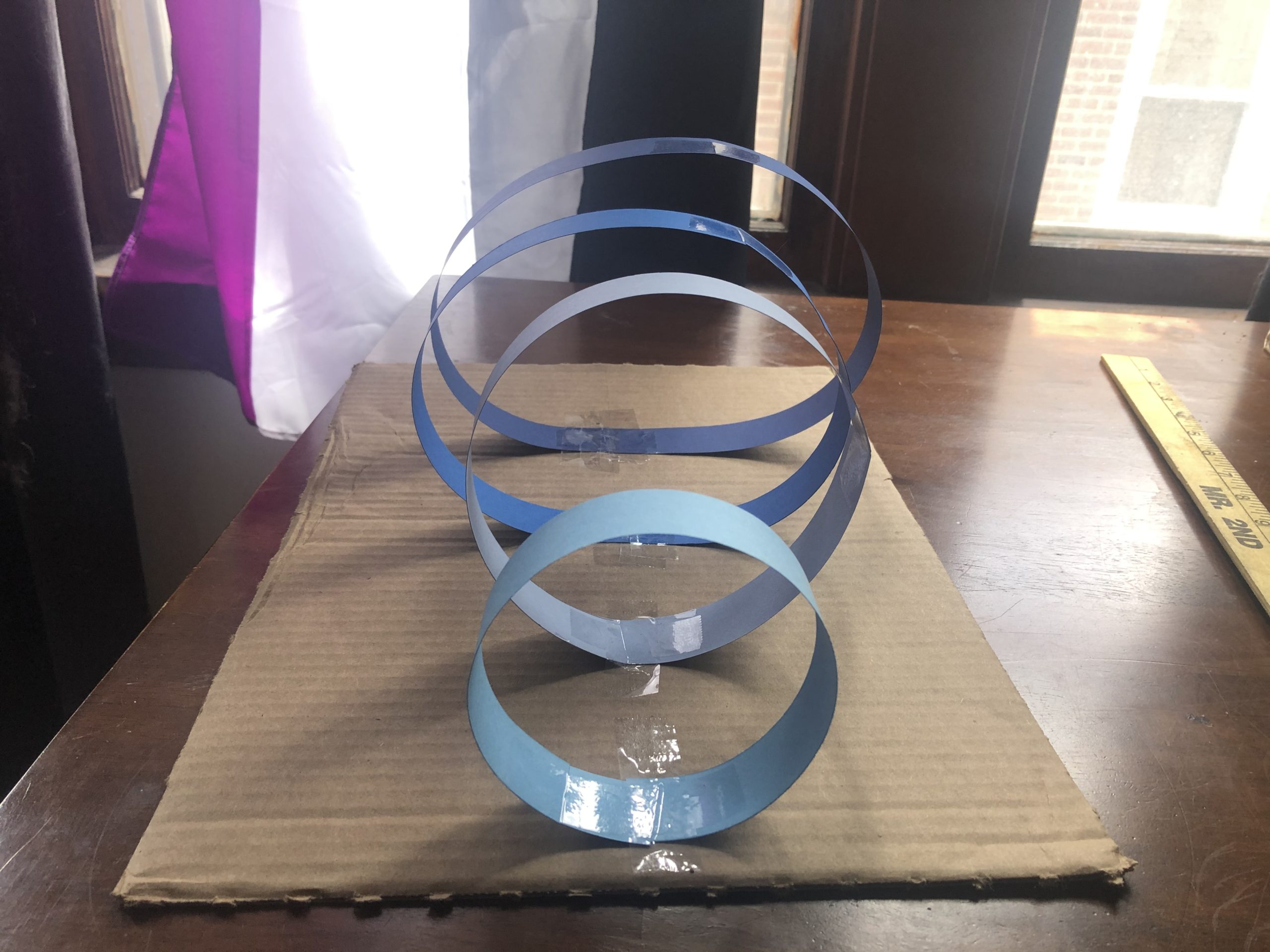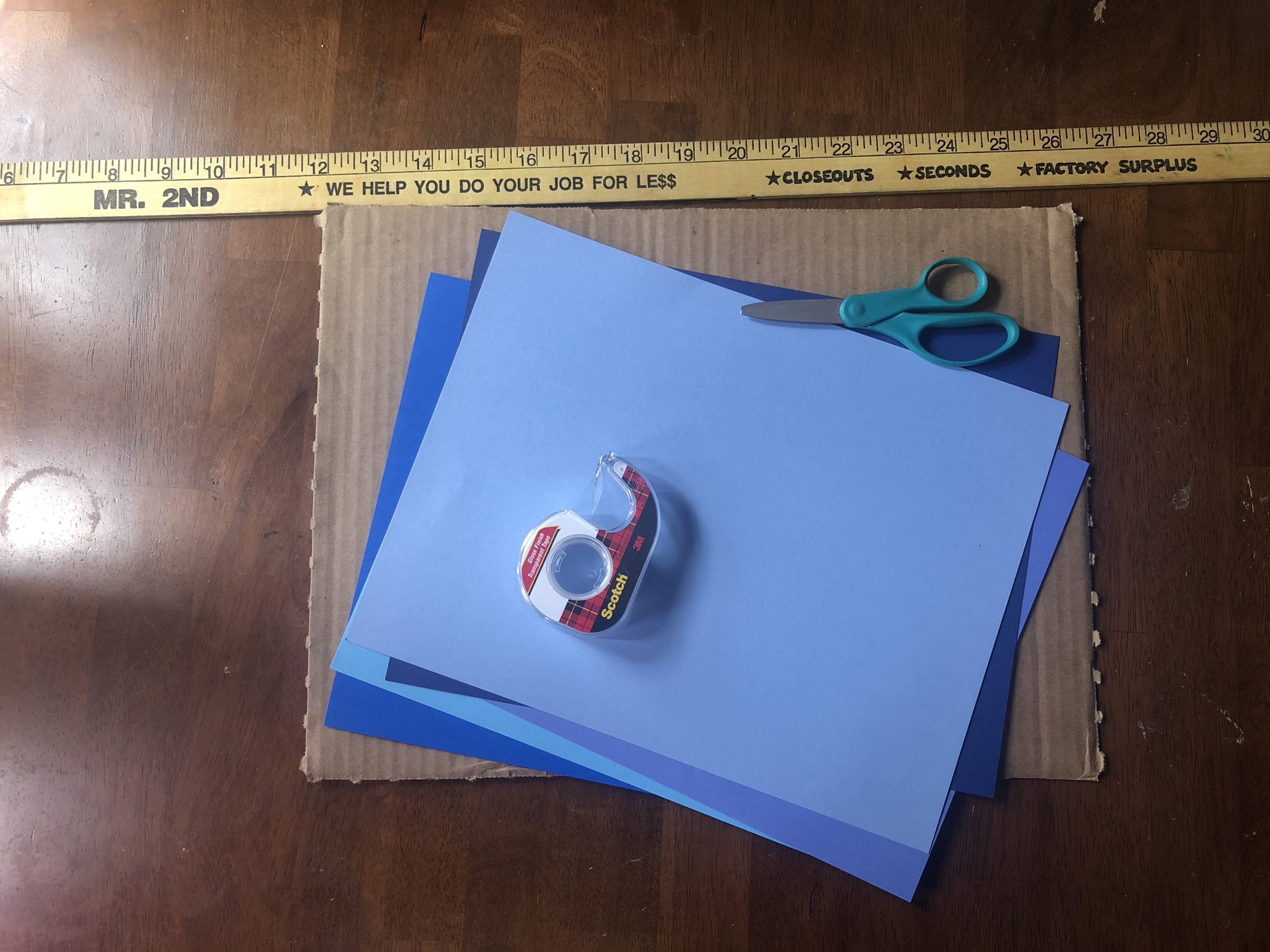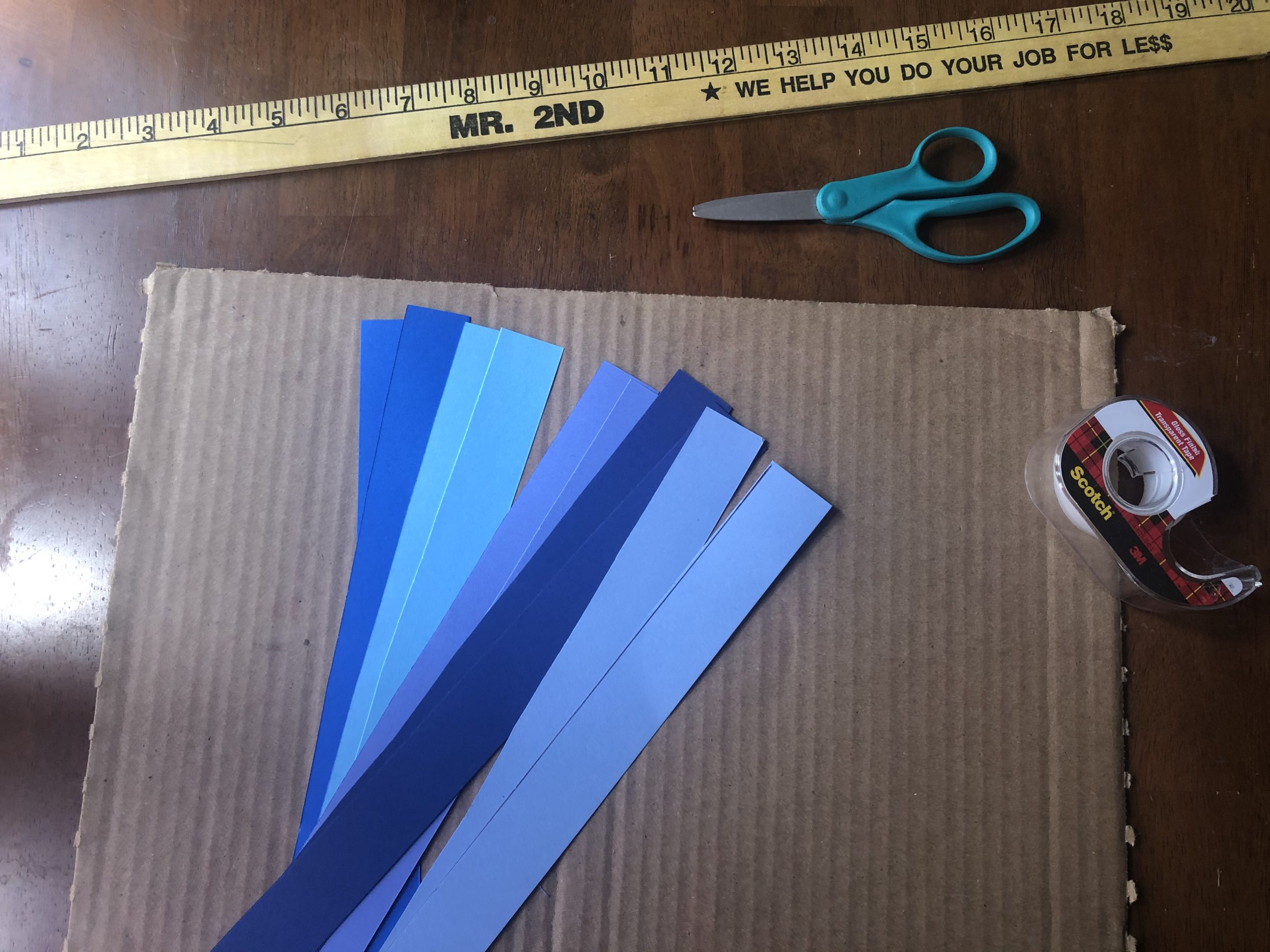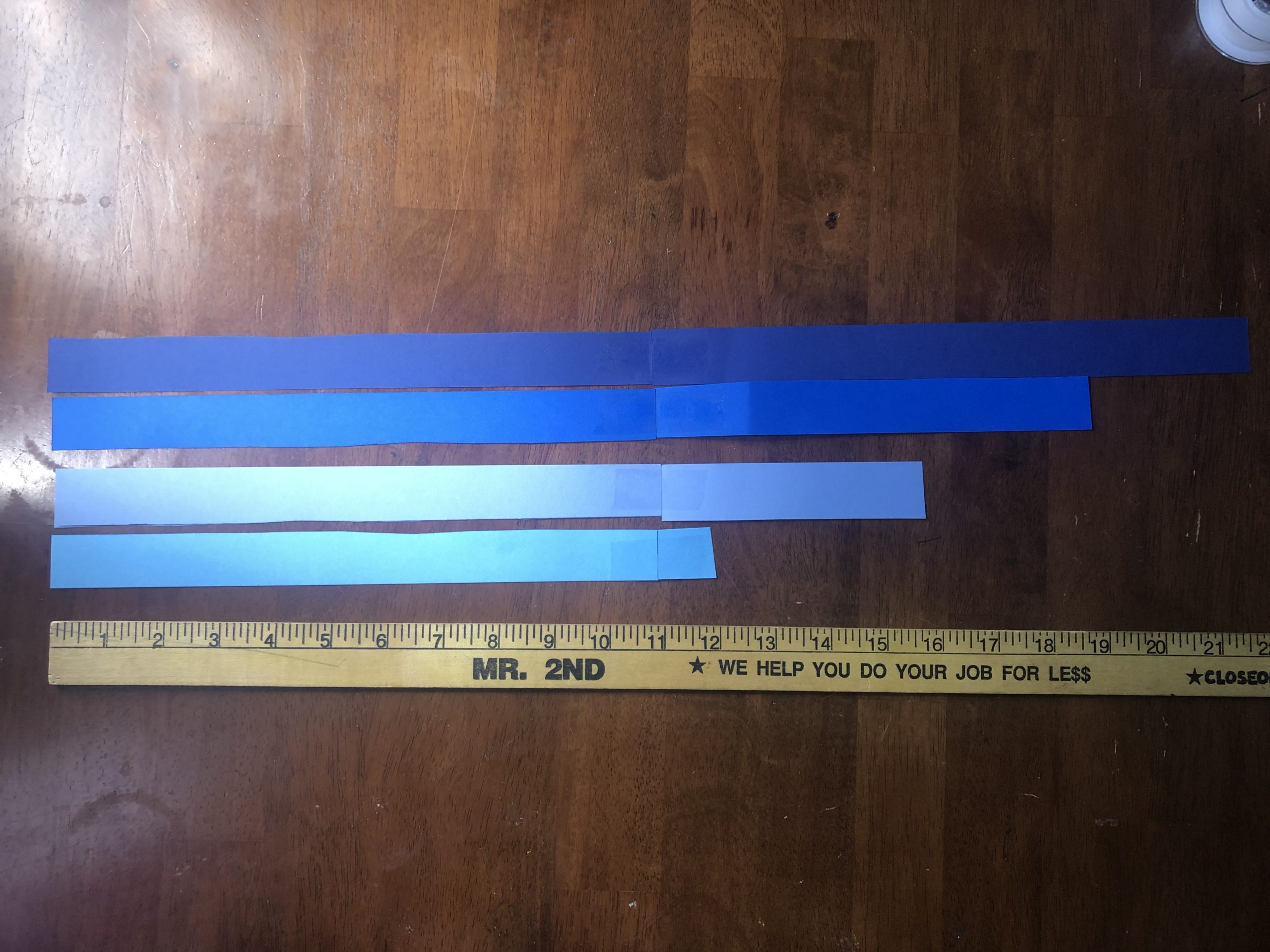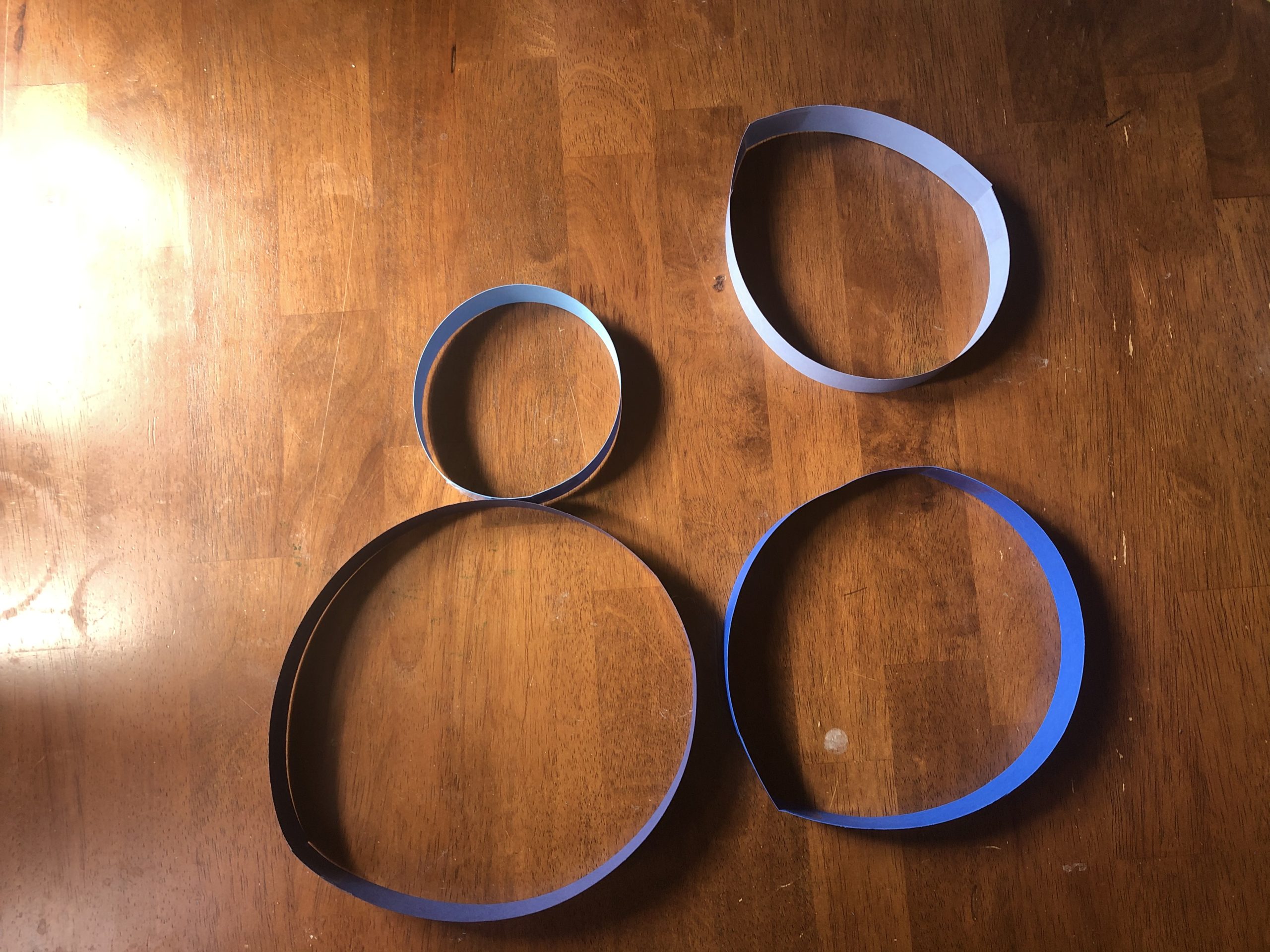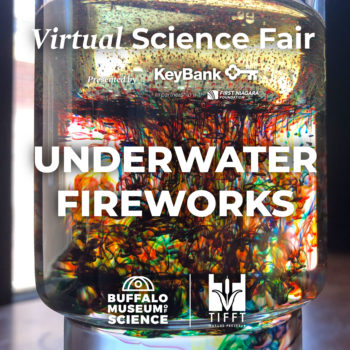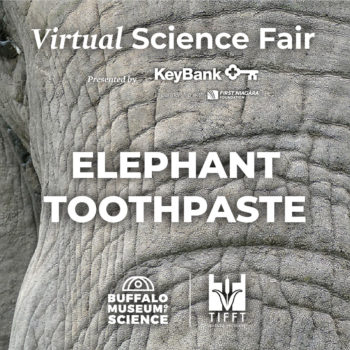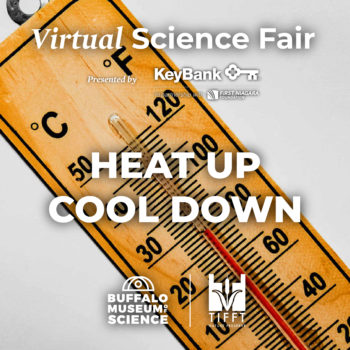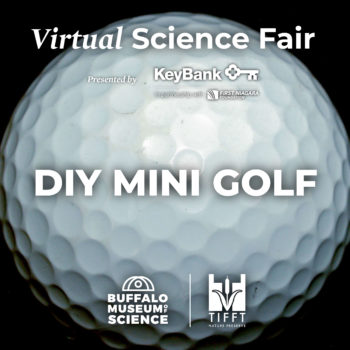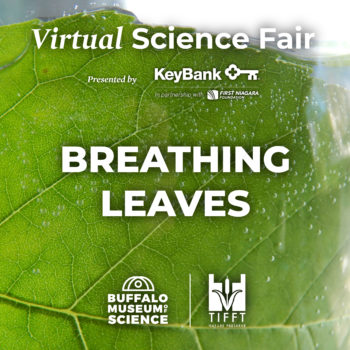Resonant Rings

Have science fun as a family! Complete activities with parental supervision.
Materials:
- Four sheets of construction paper
- Tape
- A piece of cardboard (at least 5 inches x 12 inches)
- Scissors
- Ruler
Procedure
- Cut eight strips of construction paper, about one inch wide.
- Use tape to create 4 long strips, about 22 inches long.
- Keep one strip 22 inches long and trim the others so you have strips of the following lengths: 22 inches, 19 inches, 16 inches, 12 inches.
- Tape the two ends of each strip together, forming four rings.
- Arrange the rings from biggest to smallest. Tape the rings to the cardboard from smallest to largest, leaving at least 2 inches between each ring.
- Place the ruler next to the cardboard and gently move the cardboard about 2 inches, back and forth a few times. Look at what rings are moving. Do they all move? Which moves the most? Which moves the least? Or are they all moving together?
- Repeat this, but move faster. Do the rings behave the same from the first trial? Or differently?
- Be sure to take a picture or video to share in the Facebook comments on the Buffalo Museum of Science or Tifft Nature Preserve pages!
What’s it all about?
Things don’t vibrate the same way; we can see this in guitar or violin strings. When they vibrate, they vibrate at different speeds or frequencies depending on what they’re made of and how they are shaped.
Resonant frequency is the frequency of a vibration that is dependent on the properties of the materials that is vibrating. Different properties of the material (stiffness, mass, etc) can have an affect on how something resonates. Some things are harder to get started but take longer to stop, while others start vibrating quickly and stop quickly.
Try It!
- Instead of moving it on the table, hold the cardboard and move it up and down. How does this affect the rings?
- Does the material of the ring affect the movement? Try using thinner or thicker paper or something else!
